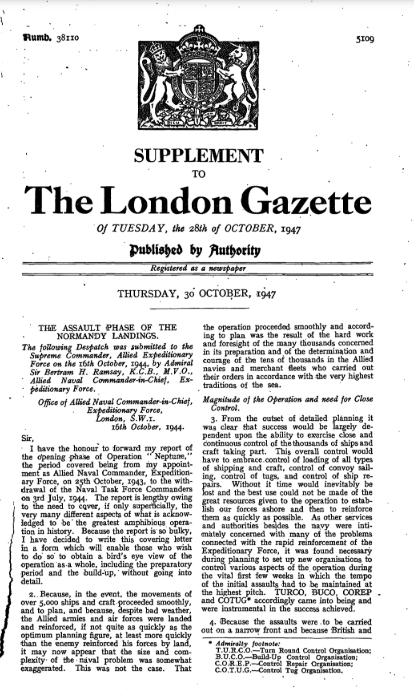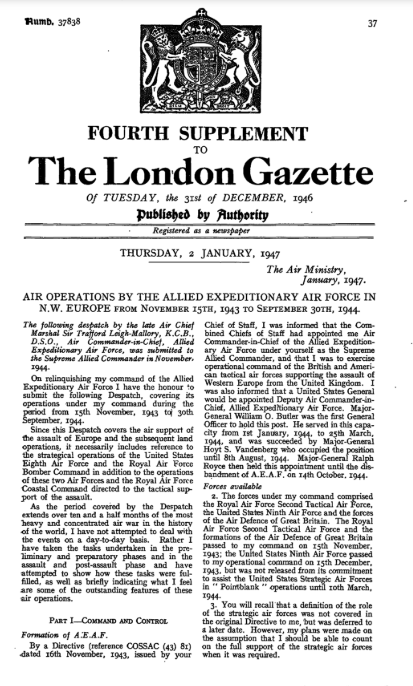21 May 2024
|
Discover useful websites, information and museums to help you learn how to trace your family member at D-Day. Learn how to research someone at the Normandy Landings June 1944.
How to learn about the D-Day Normandy Landings: a guide for family historians
Did your ancestor fight at D-Day?
Useful websites for learning about military units at D-Day
Where can I find records, war diaries & information about D-Day?
Dive deep: how to learn indepth about the Normandy Landings FREE
Learn about the assault phase of the Normandy Landings D-Day June 1944
Learn about the airborne operations of the Normandy Landings D-Day June 1944
Good museums to visit to learn about D-Day
For information about the 80th anniversary of D-Day June 1944
How to learn about the D-Day Normandy Landings: a guide for family historians
With the 80th anniversary of the D-Day Normandy Landings on the horizon (6 June 2024), now’s a fitting time to explore the events around this historic military operation and remember those who served.
The planning of the Normandy Landings was codenamed Operation Overlord, with the naval side called Operation Neptune.
Military historian Simon Fowler shares useful ideas to kick-start your search in the June issue of Family Tree out now: ‘Because of the size of the Normandy Landings there are many, many files at The National Archives, the Imperial War Museum and the other military museums’. There are many useful online resources too, many of which are free to access.
Did your ancestor fight at D-Day?
Research conducted by Ancestry a few years ago revealed that a quarter of D-Day veterans never spoke about it to family - so there's a good chance you may not know. Fortunately there are many resources to help you learn about your ancestors' war story nonetheless.
Useful websites for learning about military units at D-Day
Here are useful links to help you learn about the military units that served at the Normandy Landings:
- A list of Allied units who served in the Normandy landings
- The RAF Museum transcript of a podcast about the role of the RAF and USAAF in preparation of and during D-Day and over the course of the Normandy Landings
Where can I find records, war diaries & information about D-Day?
The war diaries for troops who landed on 6 June 1944 are online via Ancestry (£).
The operation record books for RAF squadrons who provided air cover on the day or softened up enemy targets in the weeks and months before the invasion can be downloaded from The National Archives' website (charges apply, free when you are logged in).
Little Naval material is online, but there is a mass of information at TNA.
The airborne aspect of the landings is also well explored on the Paradata website.
Dive deep: how to learn indepth about the Normandy Landings FREE
Read the official Gazette despatch on the assault phase of the Normandy Landings and the despatch covering the airborne operations.
Learn about the assault phase of the Normandy Landings D-Day June 1944
The assault phase of the Normandy Landings was covered in the Supplement to the London Gazette, number 38110, pages 5109 to 5121 (ie a detailed 16 page report), in the despatch by Admiral Sir Bertram H Ramsay, Allied Naval Commander-in-Chief, Expeditionary Force. While you will not find your ancestor named, it gives a detailed and comprehensive flavour and account of the operation. Admiral Ramsay writes, in words to make us proud of our ancestors:
"That the operation proceeded smoothly and according to plan was the result of the hard work and foresight of the many thousands concerned in its preparation and of the determination and courage of the tends of thousand in the Allied navies and merchant fleets who carried out their orders in accordance with the very highest traditions of the sea.'
The despatch covers the development of the plan to invade Normandy in 1944, the training and administration, meteorology and weather-induced postponement, minesweeping, the prevention of U-boat attacks, casualties due to mines, difficulties and delays. You will have heard about the Mulberries (artificial harbours), but have you heard of the Gooseberries (craft shelters)?
Clearly you've heard of D Day - but did you know about the careful planning behind the precise 'H Hour'. Ramsay writes: 'As H hour was linked to tidal conditions, D day was dependent on it'.
Learn about the airborne operations of the Normandy Landings D-Day June 1944
The air operations by the Allied Expeditionary Air Force in N W Europe was covered in the Fourth Supplement to the London Gazette published Tuesday 31 December 1946. The despatch was written by Air Chief Marshal Sir Trafford Leigh-Mallory, Air Commander-in-Chief, Allied Expeditionary Air Force. The Air Chief Marshal’s runs to 56 pages and covers a 10 and a half month period, in the lead up to D-Day and the subsequent month (November 1943 to September 1944). He writes:
‘I have not attempted to deal with the events on a day-to-day basis. Rather I have taken the tasks undertaken in the preliminary and preparatory phases and in the assault and post-assault phase and have attempted to show how these tasks were fulfilled, as well as briefly indicating what I feel are some of the outstanding features of these air operations’.
Topics in the 56 page despatch include: the role of strategic air forces, the formation of the Advanced AEAF (Advanced Allied Expeditionary Air Force), the objects of preparatory bombings, operations during the assault, and much more! Plus the numbers of aircraft involved, the numbers of raids on railways and roads, and tonnage of bombs dropped.
Good museums to visit to learn about D-Day
The D-Day Museum in Portsmouth and HMS Belfast, which took part in the naval side of the operations and is now permanently moored in the Thames are both extremely useful museums to visit to learn more about the events surrounding D-Day 6 June 1944.
For a poignant read, see Portmouth's plans at the former 75th anniversary of D-Day to bring together the remaining veterans, with the passing of time.
For information about the 80th anniversary of D-Day June 1944
See https://dday80.campaign.gov.uk/
The Royal British Legion D-Day 80 Appeal
If your ancestor served at D-Day and you would like to share their story with us, please email [email protected] including a summary of their role and a photographs of your ancestor in uniform, and of their medals if possible.
Other useful information points on the Family Tree website:
How to identify an ancestor's military medals
Find out more about other WW2 service records & where to order them from the MoD










